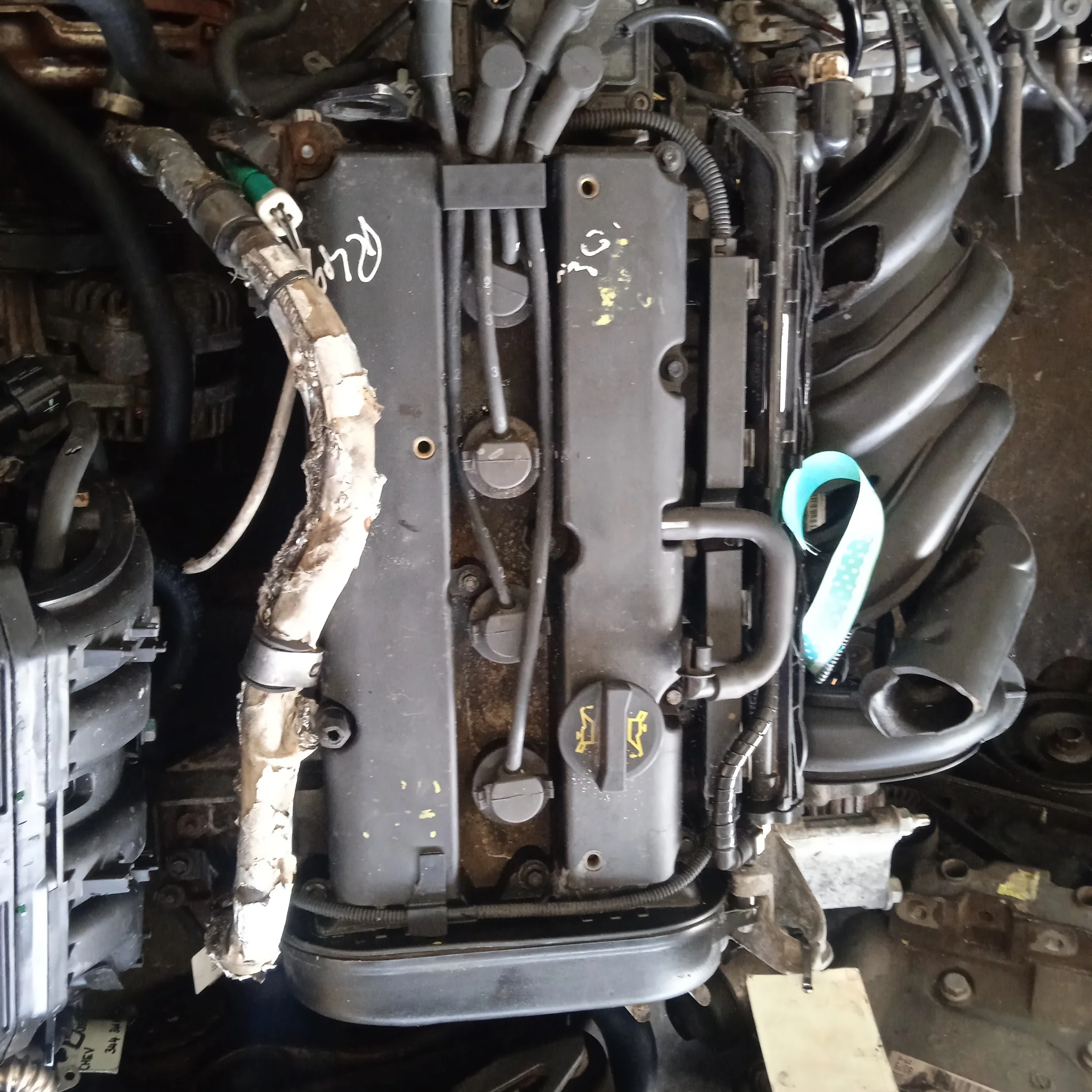Upgrade Your Ford Fiesta Engine for Better Fuel Economy and Power
Upgrade Your Ford Fiesta Engine for Better Fuel Economy and Power
Blog Article
Discovering the Advancement of Engines: From Classic Styles to Modern Marvels
From the first heavy steam engines that powered the Industrial Revolution to the emergence of inner combustion engines that changed flexibility, each stage has actually contributed to higher effectiveness and capacity. As we analyze these landmarks, one should consider exactly how the future of engine layout may unfold, testing our understandings of power and performance.
The Birth of Engine Technology
The development of engine technology marked a crucial moment in human technology, transforming power conversion and transportation. The earliest engines arised from the need to harness mechanical power for useful usage, causing the development of gadgets that converted numerous energy kinds into activity. The principle of the engine can be traced back to ancient people, where simple devices, such as the waterwheel and windmill, made use of all-natural forces to perform work. It was during the late 17th and early 18th centuries that considerable improvements started to appear.
The development of the internal combustion engine and the creation of the vapor engine militarized a profound change in commercial capacities. These engines not just boosted performance yet likewise increased the range of human mobility, enabling extraordinary transportation opportunities. The early prototypes prepared for the mechanical globe, promoting the rise of sectors and improving social structures.
As engine styles developed, they incorporated innovative products and progressed engineering concepts, paving the way for modern growths - ford fiesta engine. The birth of engine modern technology fired up a ruthless quest of performance and power, setting the phase for the vibrant evolution of transport and industrial machinery that would certainly comply with
Steam Engines and Their Influence

The vapor engine's influence was especially evident in the transport market (ford fiesta engine). Steam-powered locomotives facilitated the quick motion of goods and individuals across substantial distances, effectively reducing the geographical barriers that had actually formerly impeded trade and interaction. Steamships reinvented marine traveling, allowing for quicker and extra dependable crossings of rivers and oceans.
In market, steam engines powered factories, allowing mass manufacturing and the rise of metropolitan facilities as hubs of economic task. Steam technology promoted technologies in engineering and production processes, laying the foundation for future developments in engine style.
The Surge of Interior Combustion
Often overshadowing vapor power, the rise of inner combustion engines marked a transformative shift in transport and sector throughout the late 19th and very early 20th centuries. The advancement of these engines, identified by their capacity to burn gas within the engine itself, allowed greater performance and power compared to traditional steam engines. Introducing innovators such as Nikolaus Otto and Rudolf Diesel played vital roles in developing engine styles, bring about extensive fostering in autos, boats, and commercial equipment.
The interior combustion engine's small dimension and fairly lightweight nature facilitated the introduction of personal cars, reinventing private mobility and improving urban landscapes. By making it possible for faster travel and the reliable transport of goods, these engines catalyzed economic growth and fostered globalization. The versatility of fuel options, including fuel and diesel, further boosted their allure, enabling varied applications across different markets.
Despite the environmental problems that would certainly later arise, the preliminary attraction of inner burning innovation stocked its transformative potential. As society accepted this development, the structure was laid for useful content modern transport systems, establishing interior burning engines as a cornerstone of commercial innovation and every day life throughout the 20th century.
Improvements in Engine Efficiency
As inner burning engines ended up being indispensable to transportation and sector, the focus shifted in the direction of enhancing their performance to fulfill growing demands for performance and sustainability. Innovations in engine style, product scientific research, and modern technology have substantially contributed to this advancement.
One major advancement is the development of turbocharging, which permits increased air consumption, leading to even more total fuel combustion and improved power outcome without expanding engine size. Additionally, variable shutoff timing systems have actually been executed to enhance engine performance across numerous RPM ranges, thus improving fuel efficiency.
The application of innovative gas shot modern technologies, such as direct injection, has additionally played a vital duty. This approach enables even more exact control over the fuel-air combination, promoting far better burning and lowering discharges. site here Moreover, light-weight materials, including aluminum and composite parts, have actually been embraced to reduce total engine weight, leading to enhanced performance.
These innovations show a wider trend within the automotive sector, where the synergy between design technology and environmental factors to consider drives the recurring quest for higher performance in internal combustion engines. As a result, contemporary engines are now extra powerful, cleaner, and effective than ever, leading the way for an extra sustainable future in transport.
The Shift to Electric Power
With growing worries over ecological effect and fossil gas reliance, the vehicle sector is experiencing a substantial shift in the direction of electric power. This change is driven by a mix of technological improvements, regulative stress, and altering customer preferences. Electric cars (EVs) use a compelling option to conventional inner combustion engines, flaunting reduced greenhouse gas discharges and lower operating expense.
The increase of battery modern technology has been a video game changer, with lithium-ion batteries ending up being extra effective and cost-efficient. Improved power thickness and faster billing capabilities have actually made EVs extra useful for day-to-day usage. Governments worldwide are executing rewards and establishing enthusiastic targets for phasing out fossil gas lorries, therefore accelerating the adoption of electric power.
As charging infrastructure expands and battery innovation continues to improve, the change to electric power is poised to improve the vehicle landscape, promoting sustainability and development in the years to come. The future of transport is electric, and the energy is indisputable.
Conclusion
The evolution of engine technology represents a significant trajectory of technology that has actually exceptionally influenced transport and sector. From the foundational steam engines to the transformative interior combustion engines, each growth Click Here has actually contributed to boosted flexibility and economic growth. The existing transition towards electric power emphasizes a vital commitment to sustainability, driven by improvements in battery technology. This recurring advancement not only mirrors changing societal demands yet also highlights the possibility for a cleaner and more effective future in engine style.

Report this page